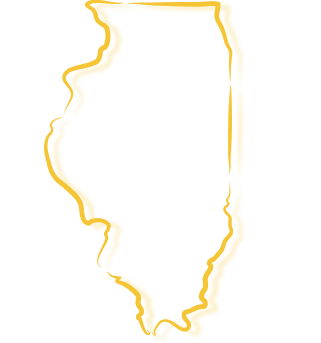Weather-Related Driving in Missouri

By Zane T. Cagle | April 11, 2021 | Car Accidents, Featured, Personal Injury
InjuryAttorney Free Application for iPhone/Droid
The weather interferes with roadway safety through visibility complications, precipitation, high winds, and temperature extremes to impact driver capabilities, vehicle performance, pavement friction, roadway infrastructure, crash risk, and increased traffic flow complications. Download our free iPhone/Droid application.
Precipitation (Rain, Snow)
Rain and snow create problems with driver visibility, pavement friction, and lane obstruction. These variables contribute to a vehicle’s performance, specifically traction, roadway capacity, traffic speed, and accident risk. When the visibility of drivers and pavement friction is diminished, the likelihood of car accidents rises. It is little wonder that more car accidents happen not only in snowy conditions but also caused by wet pavement. No matter the season, wet pavement can contribute to accident risk through loss of automobile traction. Wet road conditions can be a hazard year-round, but the winter brings far more snow and ice to complicate roadways.
Weather-Related Statistics on Vehicle Accidents
On average, there are 6,301,00 vehicle crashes each year. Approximately 24% of these crashes, about 1,511,000, are weather-related. Weather-related crashes are defined as those crashes that occur in adverse weather (i.e., snow, sleet, rain, and fog) or on slick pavement (i.e., wet pavement, snowy/slushy pavement, or icy pavement). On average, 7,30 people are killed, and over 629,000 are injured in weather-related crashes each year. (NHTSA data from 1995-2008)
The vast majority of weather-related crashes occur on wet pavement and during rainfall. Seventy-five percent on wet pavement and forty-seven percent during rainfall. A much smaller percent occurs during winter conditions. Fifteen percent of crashes occur during snow/sleet, and thirteen percent occur on the icy pavement, and eleven percent on the snowy or slushy pavement. Fog contributes to only three percent of the total crashes.
The Three P’s of Safe Driving-PREPARE, PROTECT, AND PREVENT
PREPARE
- Maintain Your Car: Check your battery, tire tread, and windshield wipers, keep your windows clear, put no-freeze fluid in the washer reservoir and check your antifreeze.
- Have on Hand: flashlight, jumper cables, abrasive material (sand, kitty litter, even floor mats), shovel, show brush and ice scraper, warning devices (such as flares), and blankets. For longer trips, take food, water, medication, and cell phone.
- Stopped or Stalled? Authorities recommend staying in your car, do not overexert, put bright markers on antennas or windows and shine dome light. If you run your car, check for a clear exhaust pipe and run it just enough to stay warm.
- Plan Your Route: Allow plenty of time to reach your destination by checking the weather and road conditions, be familiar with maps/directions, and let others know your route and expected arrival time.
- Practice Cold Weather Driving: during daylight, rehearse maneuver slowly on ice or snow in an empty lot, steer into a skid, know your brakes–stomp on antilock brakes and pump on non-antilock brakes, increase stopping distances, and do not idle for a long time with the windows up or in an enclosed place.
PROTECT YOURSELF
- Buckle up and use child safety seats properly.
- Never place a rear-facing infant in the seat in front of an airbag.
- Children under 12 years of age are much safer in the back seat.
PREVENT CRASHES
- Drugs and alcohol never mix with driving.
- Slow down and increase distances between cars.
- Keep your eyes open for pedestrians walking on the road.
- Avoid driver fatigue. Get plenty of sleep before the trip, stop at least every three hours and rotate drivers if possible.
- If you are planning to drink, designate a sober driver.
- Do not pass snow plows and sanding trucks. The road in front of them is likely worse than the road behind.
- Brake gently to avoid skidding.
- Turn your lights on to increase your visibility to other drivers.
- Use low gears, especially on hills, to increase traction.
The best advice is not to drive unless you absolutely required it. However, at some point, most of us must travel whether we really want to or not–work requires us to travel, and simply getting out to the grocery store is necessary after several days. So when you drive, be careful. Implement the Three P’s of Safety, be Prepared, Protect Yourself, and Prevent Crashes.
What if I’m in an Accident?
- Determine first if there are any injuries and call 911 for medical assistance- be certain any victims are getting emergency medical assistance as a first priority no matter the fault of the accident.
- Call the Missouri Highway Patrol or local authorities so they may assist in getting medical assistance and for documentation of the accident and traffic control.
- Exchange insurance information with the other driver(s) as well as contact information
- If possible, take pictures of your wrecked vehicle and the crash site. Download our free iPhone or Droid application “Injury Attorney” for steps you can take and document from your smartphone.
- Give statements to officers recalling facts and events–“I feel” statements or speculation are not helpful to officers.
- Monitor your physical condition and seek medical assistance right away. I always recommend that anyone who is in a crash seek medical assistance right away. Adrenaline and shock may cloud your actual physical condition. If the accident was a minor crash and you do not initially feel you are hurt, monitor your progress closely in the days that follow and seek medical assistance for any lingering pain, soreness, or especially numbness.
Keep all of the information that you gathered after the car accident. Crucial evidence may be in the photos that you take or the information that you gain. Obviously, sorting through liability and insurance matters is not the first priority following a crash but can be very critical in the days/weeks that follow. The first priority is to be certain you are okay physically and have not been injured. In those instances where serious injuries are involved, you may not be able to photograph the scene or the vehicle. Often investigators, officers, and even tow yards will photograph wrecked vehicles and diagram the crash site. All of this information is critical when you go negotiate with an insurance company.
Whether or not you will need to file a personal injury claim will depend greatly on your injuries. Frequently, insurance companies do a good job of compensating for property damage. However, other damages such as medical costs, pain, and suffering are frequently contested since the medical bills can become very costly as well as it is sometimes difficult for all parties to agree on the amount of the lost wages, medical costs, and pain/suffering. When serious injuries or fatalities are involved, getting expert assistance from experienced personal injury attorneys is usually the best option. Seeking information and consultations are always free so simply contacting an attorney for information and advice is a free service of which all individuals should take advantage. Our attorneys are available seven days a week to answer your question, so call us today at (314) 276-1681.
Safe Winter Driving. Occupational Safety and Health Administration.
How Do Weather Events Impact Roads? U.S. Department of Transportation and Federal Highway Administration.
Contact Us Today
The Cagle Law Firm serves accident and injury clients throughout St. Louis and the greater St. Louis metro area, including St. Louis Counties of Chesterfield, Wildwood, Eureka, Ladue, Olivette, Clayton, Kirkwood, Fenton, Affton, and Jefferson Counties of Arnold, High Ridge, Antonia, House Springs, and the eastern Missouri and southern Illinois communities. If you or your family needs legal assistance with your personal injury case, call The Cagle Law Firm at (314) 276-1681 or use our online contact form to request a free case review or get more information.
Areas Served
The Cagle Law Firm – Missouri
The Cagle Law Firm – Illinois
The Cagle Law Firm – Kentucky
CONTACT THE CAGLE LAW FIRM TODAY
Request your FREE CASE REVIEW today by calling (314) 276-1681 or by sending a message through the site contact form. Your contact info stays private and is only used to reply to your inquiry.
Whether you need information about a new injury or existing injury, our lawyers answer your questions with no-risk and no followup marketing.
Free Consultations and Case Reviews
Questions? Ask An Attorney
Fields marked with an * are required
Copyright © 2025 St. Louis Personal Injury Lawyers | The Cagle Law Firm. All rights reserved.
Disclaimer | Site Map | Privacy Policy
Get a free case review with St. Louis' best personal injury lawyers to help you win top compensation





